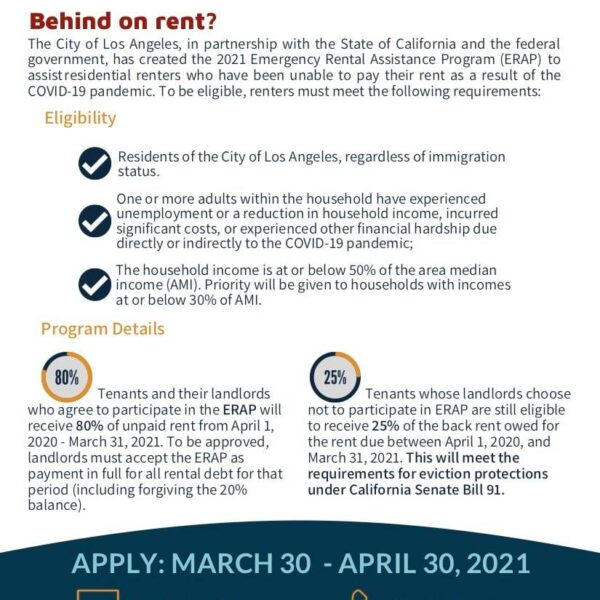A new subvariant of omicron, named XBB.1.5, now accounts for 40 percent of Covid-19 infections in the U.S. XBB.1.5 is even more prevalent on the East Coast, accounting for 75 percent of infections.
An Ethnic Media Services (EMS) briefing took an in-depth look into the origins of the new subvariant; whether our current vaccines, including the updated boosters, can provide sufficient protection against XBB.1.5, new therapeutics in the pipeline, and a possible drop-off in people seeking treatment once Paxlovid is no longer free/subsidized as the public health emergency ends. Researchers also discussed a novel study that looks at the prison population to note the rates of infections in fully-vaccinated people and reinfections in people that have already experienced Covid.
Dr. Ben Neuman, Chief Virologist of the Global Health Research Complex, Texas A&M gave this overview:
When speaking about covid testing, it is important to remember that covid-19 is the leading cause of death in 2020, the third leading cause of death in 2021, and also the third leading cause of death in 2022. So anyone who’s telling you that covid is over is misinformed at the very least. For those tracking other diseases influenza peaked about 5 weeks ago and it’s been coming down and that’s good news. Respiratory Syncytial Virus or RSV peaked about 8 weeks ago and has been coming down steadily which is also good news. However covid cases are rising driven by XBB.1.5 and some other variants but mostly that one. XBB.1.5 appears to grow well and has a little bit better affinity for the receptors in our lungs, it is better at holding on to people essentially than some of the previous strains it evolved from. It had many changes in the receptor binding domain, this is the part that actually makes contact between the virus and the human. It had five mutations in this region compared to BA-5 which is currently used as the other half of the bivalent vaccine along with the original version. To put that in perspective, when Omicron first appeared and started cutting through immunity, it had seven or eight mutations in that region compared to the strains that were seen at the time. So XBB represents nearly but not quite as large an evolutionary step as Omicron and based on the rapid rise it would appear that it is living up to its genetic destiny. It is very infectious and is overcoming at least some components of its immunity. There are multiple problems I think in dealing with XBB.1.5. One of those is the low vaccination rate which Is entirely voluntary and currently sits for the US at about 15% of the total population. The new bi-valent vaccine has been approved even for people under 5 years old, for the Pfizer version the uptick has not been very high lately. The other problem is that the current bivalent vaccine provides some protection but not very good protection, particularly against XBB. Those studies were done with XBB1 and are a little bit different but not at the key receptor-binding domain so that should be representative. But as the authors of that paper concluded and the office of several other papers concluded, it is definitely time to update the vaccine strain. Unfortunately, the FDA Vaccines advisory committee has not met in 3 months. It has not met to discuss covid-19 specifically in 7 months. The World Health Organization Asian committee that chooses vaccine strains and makes recommendations has not announced anything in the past 7 months, and the World Health Organization has not made an announcement on XBB in the past two months when it was a very different situation, so I think collectively at the individual level and also at some administrative levels we’ve essentially taken our eyes off the ball as refers to covid-19. This particular variant was first picked up in India but it’s probably a mistake to have it tied to a country, this is a virus that came from an infected human almost certainly and we’re all very much alike on the inside. The virus was picked up in six other countries within a week of that first detection and genome sequence so it had likely spread a little bit earlier than that. Hospitals are currently doing okay they’re about 80% occupied in the US as a whole and only between 7 and 8 percent of that is covid-19 cases are rising and I think there is some concern that at least in some spots it will exceed capacity if nothing is done to stop it at this point. So when the FDA and vaccine manufacturers met about a year ago to discuss updating covid vaccines they came to the conclusion that 1 year was certainly too long to wait between vaccine updates and that with mRNA technology we should be able to move more quickly and fluidly. It’s been a year and the vaccine has not been updated and neither the main vaccine mRNA vaccine-producing companies have released a statement as to whether or not they will be updating it unfortunately. For other vaccines like the Chinese vaccines, the prospects are dim because the current variants like Omicron and XBB are difficult to grow cell culture. Think of these as something like animals that do not breed well in captivity, they grow very well in people’s lungs but are a little harder to make large quantities of. And so vaccines that require large quantities of virus like the inactivated virus vaccines would be very difficult as well as some of the vaccines that are based on expressed proteins which are also rather tiresome to farm. So it appears we may have achieved herd immunity against the earliest trains from 2019 20 & 21. We’re still unfortunately vaccinating against one of those dreams and against another strain that appears to be on the decline. I think this is a problem that can be solved by humans but I think it won’t be solved by standing still and I think each of us has a part to play and at least for the individual that part would be getting the updated booster which is a lot better than anything else that’s out there at the moment.
Dr. Oliver Brooks, Chief Medical Officer, Watts Healthcare shared the importance of getting the vaccines and getting treated: I want to begin by answering the question: “Is it or will it be endemic ?”.
So, what does endemic really mean? Endemic means an infection that is still circulating in an area or community that is not disrupting daily lives. Car accidents are endemic but not disrupting our daily lives. Is it disrupting our daily life? Right now yes, but can we move to where it is not disrupting our daily life? I think we can get there so use that as the lead into what can we do to get it to endemic which means not interrupting our daily lives. I don’t believe COVID is gone away just like influenza or RSV. Those are both theoretically endemic, they come higher in the winter seasons, which is what a lot of respiratory viruses tend to do. Testing, vaccinating, and treating are basically the tools in our armor material.
Testing: We do need to keep testing to protect others from catching the virus from an infected person. We will be testing everyone with symptoms and if you test positive you will get treatment and if you don’t have it we will treat for the other things that you might have.
Vaccinations: Only 15% of the population has been updated on their vaccines so people need to get their second booster. Vaccines are safe and effective and there’s no reason not to get vaccinated and boosted. Even if they only had a 10% effectiveness you should still get vaccinated. The fundamental concept probably is that by the time some of you get it in there may be another variant. XBB made it strong because it invaded the immune system and wasn’t killed as well.
There are three Cs that impede: one of them is COMPLACENCY, CONVENIENCE,
People are not taking Covid seriously. Covid dropped life expectancy in 2020 by 1 year; it is the first time in like 20 years that life expectancy in America dropped and for African Americans, it dropped by 2 years. We are complacent, do we need another million people to die before we stop being complacent? what more do we have to do?
Treatment: Paxlovid is for those who are at higher risk for severe disease. Vaccinations are the best way of preventing severe illness. It will prevent you from severe illness, going to the ER, and dying. Treatment is for those that got Covid and severe illness. Paxlovid still seems to be the treatment of choice on that level. 65 and older have an underlying condition like diabetes, chronic lung disease, Organ transplant, obesity, etc.
Jill Rosenthal, director of Public Health Policy at the Center for American Progress: As we’ve heard and we know covid is not predictable and as we’ve already heard from Dr.Neuman we are still in a winter surge and this is at the same time that we are unwinding Federal payments for covid vaccine and treatments. So although we may like to imagine that covid pandemic is over it is absolutely not. I just want to start by saying that since the passage of the American Rescue plan act in March of 2021 Congress has not met the administration’s request for additional covid funding and that short-sighted failure to invest in the response leaves us without the Tests, and treatments and vaccines we need going forward leaves us unable to contain, to track the disease and leaves us unprepared for future surges. As the vaccine was developed in order to provide enough doses for the population the White House had to take funding from other areas to be able to pay for that because of inadequate funding and as a result, we saw a decrease in at-home test availability and we found that there’s less personal protective equipment being put into the national stockpile and lack of support for continued vaccine development and treatment. So We have already seen that funding to cover testing and treatment through the uninsured program ran out in March, funding to cover provider fees for vaccinations for the uninsured program ran out in April, And what this means is that some community members have been turned away from testing sites in places where the clinics can’t sustain the cost to administer the tests. We’ve seen that in the future as commercialization of the covid-19 occurs we are going to see that consumers are going to have to pick up the costs of treatments and tests in particular and this threatens access for low-income and uninsured people. Because of the Affordable Care Act’s preventive Services coverage standards covid vaccines will remain free to individuals who have public insurance and most individuals with private insurance even after the public health emergency has expired but for people who are uninsured they can be charged part or the full amount of the vaccine which will be a $100 1$130 per dose so obviously that is an access barrier. As we are shifting to this commercialization response, we are preparing to end continuous coverage protection for people on Medicaid and so at the same time we have the depletion of Federal supply and resources and we have the end of the public health emergency coming up and we have the end of continuous eligibility for Medicaid this makes access challenges even greater and I think that this really raises access and also equity concerns. We had mostly closed the gap in vaccine disparities but the data from November shows that the rate of white people who have received the Bi-Valent booster was twice that of those of eligible Black and Hispanic people and nearly twice as high for native Hawaiian and other Pacific Islander people. We also could see in October that in hearing what we talked about the fact that the vaccine may become less effective, we also know that in October people who have been vaccinated with a fall booster had more than 18 times lower risk of dying from covid than people who are unvaccinated and they also had a three times lower risk of infection, so although we have challenges with a new variant it shows how critically important it is that people get vaccinated, it’s the number one thing that we can do to protect ourselves. It’s already been mentioned racial and ethnic gaps in terms of Treatment with Paxlovid data also show rates of self-reported long covid, are more common among people who are female, transgender, Hispanic, and those without a high school degree, there are some studies that suggest that Latino and black adults who have had higher rates of workplace exposure to covid have had higher rates of covid and then eventually long covid. But impacts on vulnerable communities even if we had a smooth transition to commercialize the covid-19 and make vaccines, tests, and treatments available we still need Public Funding because we need to continue to do the research needed for updated vaccines. We need to be able to fund that kind of research to develop new vaccines and we need to make sure that our private sector partners are producing the tests that we need, we may remember that there were long lines at 1 point to get tests because at one point Abbott Laboratories was destroying tests because it looked like we didn’t need them anymore and then we were left without them. So we need to make sure we are preparing and stockpiling what we need for the future, not to mention continue to track the disease so that we know prevalence rates, we need to continue to support research into long covid and we need to continue to support global vaccination efforts because as we know these things travel. In terms of what we can do I don’t see anything happening in Congress in the near future, I will say that the Federal Government is pursuing public-private partnerships.
In terms of what states can do, they can look at those about to lose MEDICAID eligibility insured.
Examples of things I’ve heard there are states looking at ways to simplify the enrollment process and to promote continuity of coverage for people who may lose Medicaid coverage. In some states, they are looking at ways that they can automatically enroll people who are going to lose Medicaid coverage into Marketplace plans. California and Rhode Island are doing that, right now they are looking at ways to automatically enroll people into the lowest-cost marketplace plans so that when they lose Medicaid coverage they still have some coverage and then they can opt to keep it or not.
Another example is in Oregon where they stood off the bridge health program which will allow just Medicaid members who aren’t a certain percent of the federal poverty level to stay enrolled in Medicaid temporarily and so this is something we’re going to need to watch because it’s obviously very concerning not to have Federal commitment to continue to respond to the pandemic and we don’t know where it’s going.
To add to what Dr. Brooks was saying about vaccines, tests, and treatments the other things we can do are things such as improving our ventilation and air filtration. This is important for all of us and there has been Federal money coming to States and communities that can be used for instance in schools so that way we can make sure we can keep our schools open and make sure we can keep people safe or at least make it less likely that diseases spread the way they do.
Sophia Tan, Research Data Scientist, UC San Francisco
Shared slides about some studies on the Infectiousness of SARS-COv-2 breakthrough Infections and reinfections during the Omicron wave. Do with the rise of these more contagious. There have been more breakthrough infections which are infections that we see in people that have been vaccinated for covid-19, there are more cases among people that have had previous infections, and also cases in people that have had both prior covid-19 vaccines. What are the benefits of the covid vaccines?
As if I’ve had prior covid-19 vaccination vaccinations still reduce the chance that I will transmit the disease to other people around me. And this is also particularly relevant in the prison system across the U.S. which has dramatic and much disproportionately higher rates of infection and transmission and has a lot more severe outcomes as well and so the goal of this was to also better understand transmission within the prison system also kind of develop a strategy that would benefit public health in general. We approached this in collaboration with the California Prison system which shared data with us from October 2020 to May 2022. We had data on residents’ nightly housing as well as the covid-19 testing and covid-19 vaccination. This really paints a picture of a time, in which residents were in close contact with each other, and that allows us to go form a trajectory.
In terms of results, we found that for any number of doses, any type of vaccine was associated with a 22% reduction and infectiousness, and residents that had prior infection any prior SARS Covid vaccination infection experience saw a 23% reduction, we also saw that there was an additive and prior infection and we saw that these residents had 40% reductions and it really supports the fact that there is an additional benefit in getting vaccinated even after you’ve had a prior infection.






